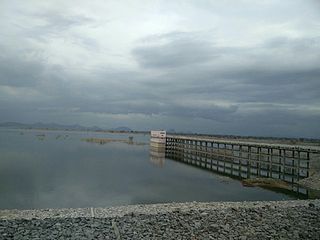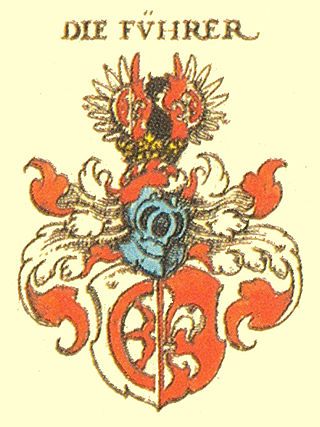Related Research Articles

The Gondi (Gōṇḍī) or Gond people, who refer to themselves as "Koitur", are an ethnolinguistic group in India. Their native language, Gondi, belongs to the Dravidian family. They are spread over the states of Madhya Pradesh, Maharashtra, Chhattisgarh, Uttar Pradesh, Telangana, Andhra Pradesh, Bihar, and Odisha. They are listed as a Scheduled Tribe for the purpose of India's system of reservation.

Alluri Sitarama Raju was an Indian revolutionary who waged an armed campaign against the British colonial rule in India. Born in present-day Andhra Pradesh, he was involved in opposing the British in response to the 1882 Madras Forest Act that effectively restricted the free movement of adivasis in their forest habitats and prevented them from practicing their traditional form of agriculture called 'podu', which threatened their very way of life. Rise in discontent towards the British colonial rule in the backdrop of the Non-cooperation movement (1920-1922) led to the Rampa rebellion (1922-1924) in which Alluri Sitarama Raju played the major role as its leader. Mustering combined forces of tribals and other sympathizers to the cause, he engaged in guerilla campaigns against the British forces across the border regions of present-day Andhra Pradesh and Odisha states in India. He was given the title "Manyam Veerudu" by the local people for his heroic exploits.

The Apatani or Tani are a tribal group of people living in the Ziro valley in the Lower Subansiri district of Arunachal Pradesh in India. This tribe speaks the languages Apatani, English and Hindi.

The Chenchus are a Dravidian tribe, a designated Scheduled Tribe in the Indian states of Andhra Pradesh, Telangana, Karnataka and Odisha. They are an aboriginal tribe whose traditional way of life been based on hunting and gathering. The Chenchus speak the Chenchu language, a member of the Dravidian language family. In general, the Chenchu relationship to non-tribal people has been largely symbiotic. Some Chenchus have continued to specialize in collecting forest products for sale to non-tribal people. Many Chenchus live in the sparse and deciduous Nallamala forest of Telangana and Andhra Pradesh.

Srikakulam district is one of the twenty-six districts of the Indian state of Andhra Pradesh, located in the Uttarandhra region of the state, with its headquarters located at Srikakulam. It is one of the six districts, located in the extreme northeastern direction of the state. It was formerly known as Chicacole, and was under Ganjam district till 1936 April 1, then merged under Vizagapatam district. Srikakulam district forms the core area of Kalinga where most of its historical capitals like Kalinganagari, pithunda, Dantapuram are located.
The Konyaks are a major Naga ethnic group native to the Northeast Indian state of Nagaland. They inhabit the Mon District, which is also known as The Land of the Anghs. The Anghs/Wangs are their traditional chiefs whom they hold in high esteem. Facial tattoos were earned for taking an enemy's head.

Khonds are an indigenous Adivasi tribal community in India. Traditionally hunter-gatherers, they are divided into the hill-dwelling Khonds, and plain-dwelling Khonds for census purposes, but the Khonds themselves identify by their specific clans. Khonds usually hold large tracts of fertile land, but still practice hunting, gathering, and slash-and-burn agriculture in the forests as a symbol of their connection to, and as an assertion of their ownership of the forests wherein they dwell. Khonds speak the Kui language and write it in the Odia script.

→

The Sora are a Munda ethnic group from eastern India. They live in southern Odisha and north coastal Andhra Pradesh.
Nethakani, also known as Netkani,As Nethkani in Maharashtra,In the state of Telangana it is known as nethakaani. are a Maratha and Telugu caste of cotton weavers and laborers.

Komaram Bheem (1901–1940), alternatively Kumram Bheem, was a revolutionary leader in Hyderabad State of British India from the Gond tribes. Bheem, in association with other Gond leaders, led a protracted low intensity rebellion against the feudal Nizams of Hyderabad in the eastern part of the princely state during the 1930s, which contributed in the culmination of the Telangana Rebellion of 1946.

Christoph von Fürer-Haimendorf or Christopher von Fürer-Haimendorf FRAI was an Austrian ethnologist and professor at the School of Oriental and African Studies at London. He spent forty years studying tribal cultures in Northeast India, in the central region of what is now the state of Telangana and in Nepal. He was married to British ethnologist of India and Nepal, Betty Barnardo.
Rampa rebellion of 1879 was an insurrection by the hill tribes in the Rampa region of the Vizagapatam Hill Tracts Agency of Vizagapatam District against the British government of the Madras Presidency.

Adilabad district is a district located in the northern region of Telangana, India. It is known as the gateway district to South and Central India. The town of Adilabad is its headquarters. The district shares boundaries with Asifabad, Nirmal districts and with the state boundary of Maharashtra.
Indervelly is a village in Adilabad district of the Indian state of Telangana. It is located in Indervelly mandal of Utnoor revenue division.
The Rampa Rebellion of 1922, also known as the Manyam Rebellion, was a tribal uprising led by Alluri Sitarama Raju in Godavari Agency of Madras Presidency, British India. It began in August 1922 and lasted until the capture and killing of Raju in May 1924.

Betty von Fürer-Haimendorf, born Elizabeth Barnardo, was a British ethnologist in India and Nepal. She was married to Austrian ethnologist Christoph von Fürer-Haimendorf.

Konaseema district is one of the 26 districts in the Indian state of Andhra Pradesh. It is situated between the tributaries of the Godavari river in the Konaseema region of Coastal Andhra. It was carved out of East Godavari district on 4 April 2022 by the Government of Andhra Pradesh. Amalapuram is the district headquarters and the largest city in this district. Other significant towns in the district are Mandapeta, Ramachandrapuram, and Mummidivaram.
The Indravelli massacre was an incident on April 20, 1981, where a gathering of Gond Adivasis, some organised by the Girijana Rythu Coolie Sangham (GRCS) front group of the Kondapalli Seetharamaiah faction of the CPI (ML) and some attending the local market, were fired on by police officers at the village of Indravelli in what was then Andhra Pradesh, but today in the state of Telangana. The rally was organised to demand land certificates for Adivasis, and to protest encroachments by non-Adiviasis. While initially granted permission to assemble, this was later revoked in fear of agitation by Naxalites.
The Madras Forest Act of 1882 enacted by British colonial government, closed off large areas of the forest in the Gudem Hills of Madras Presidency. This restricted the free movement of the Adivasis in their forest habitats, prevented them from grazing their cattle, collecting firewood and food, and practicing their traditional form of agriculture called podu. The act is also known as the Tamil Nadu Forest Act, post-bifurcation of Madras state and its renaming.
References
- ↑ Murali, Atlury (2017). "Tribal Armed Rebellion of 1922-1924 in the Madras Presidency: A Study of Causation as Colonial Legitimation". In Bates, Crispin (ed.). Savage Attack: Tribal Insurgency in India. Taylor & Francis. ISBN 978-1-35158-744-0.
- ↑ Mehta, Behram H. (1984). Gonds of the Central Indian Highlands. Vol. 2. Concept Publishing Company. p. 583.
- 1 2 von Fürer-Haimendorf, Christoph (1982). Tribes of India: The Struggle for Survival. University of California Press. pp. 75–78. ISBN 978-0-52004-315-2.